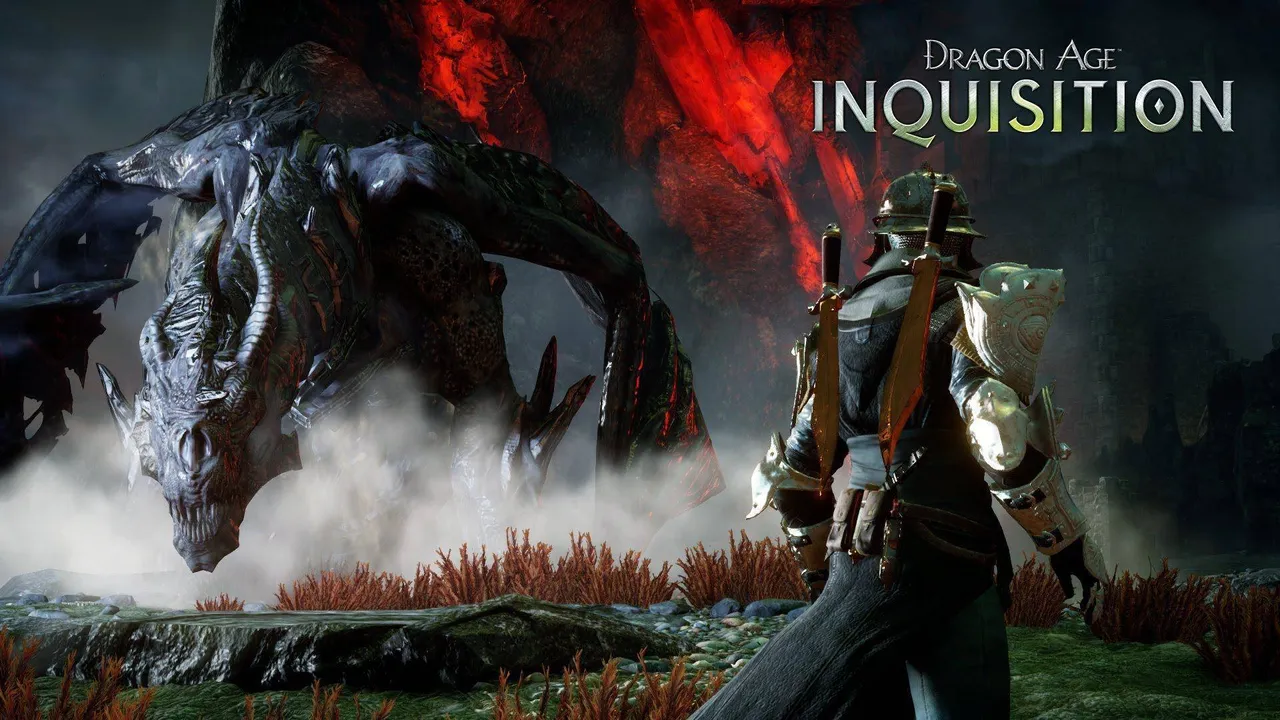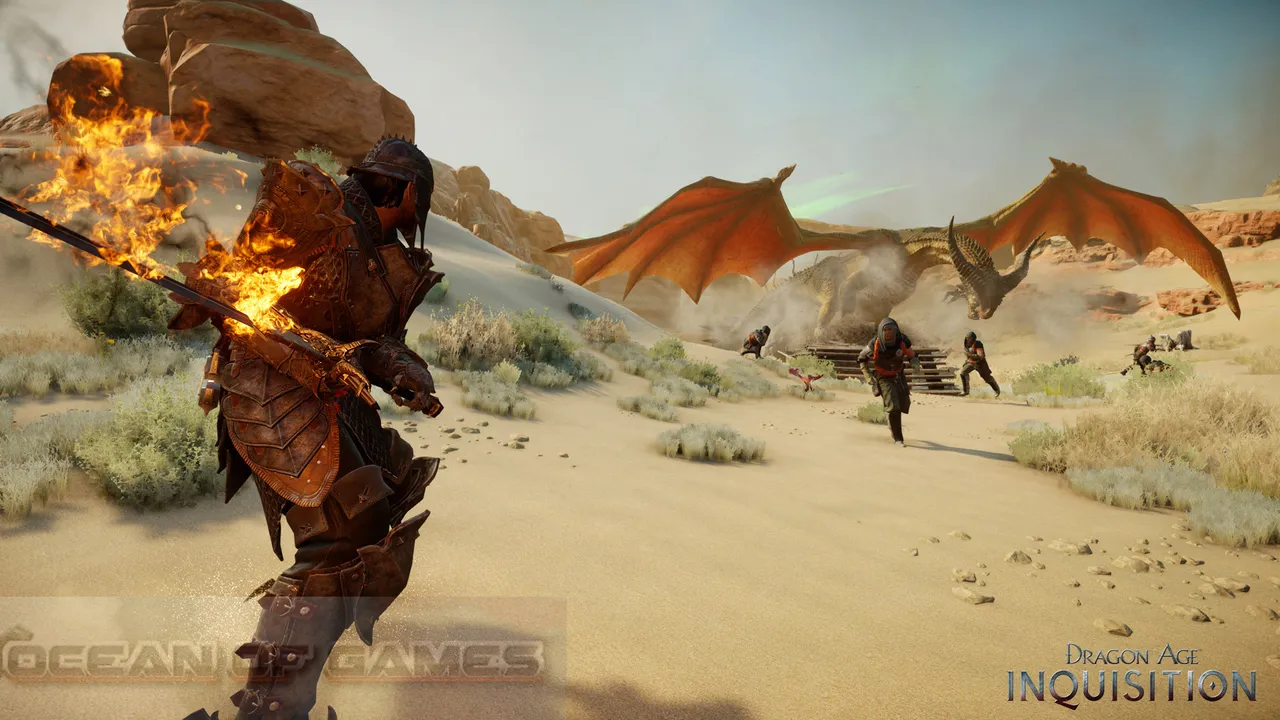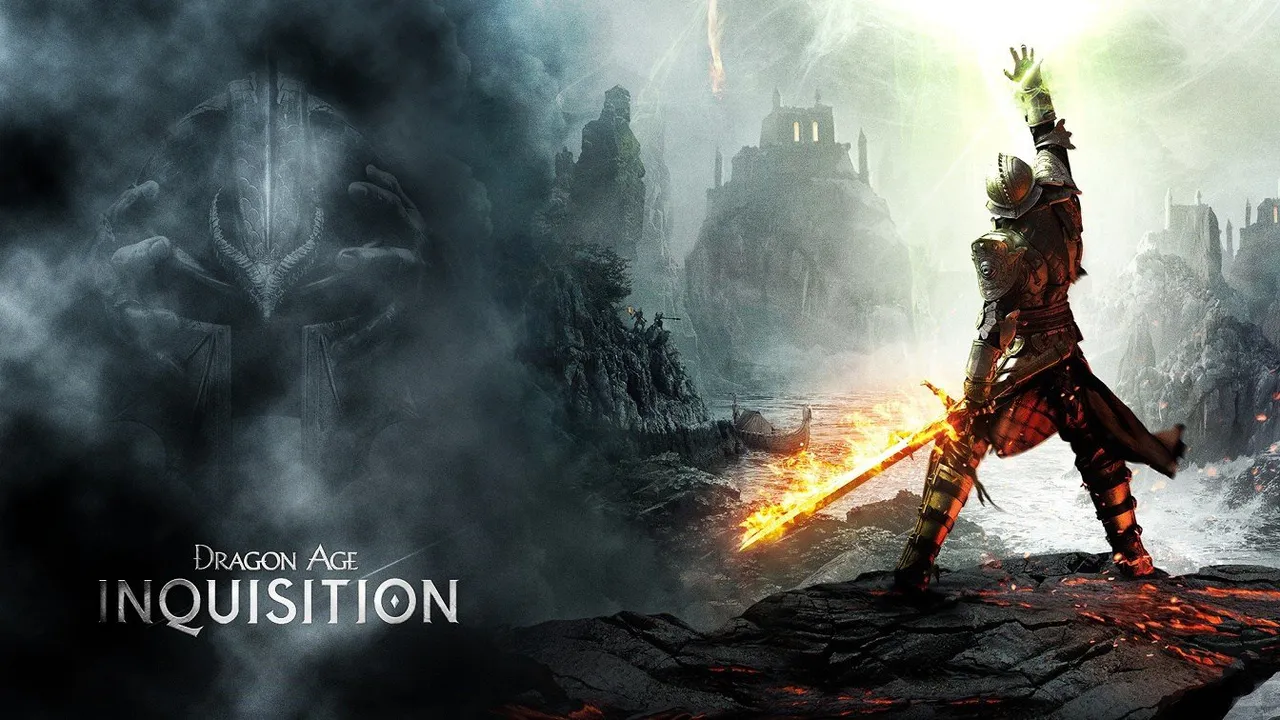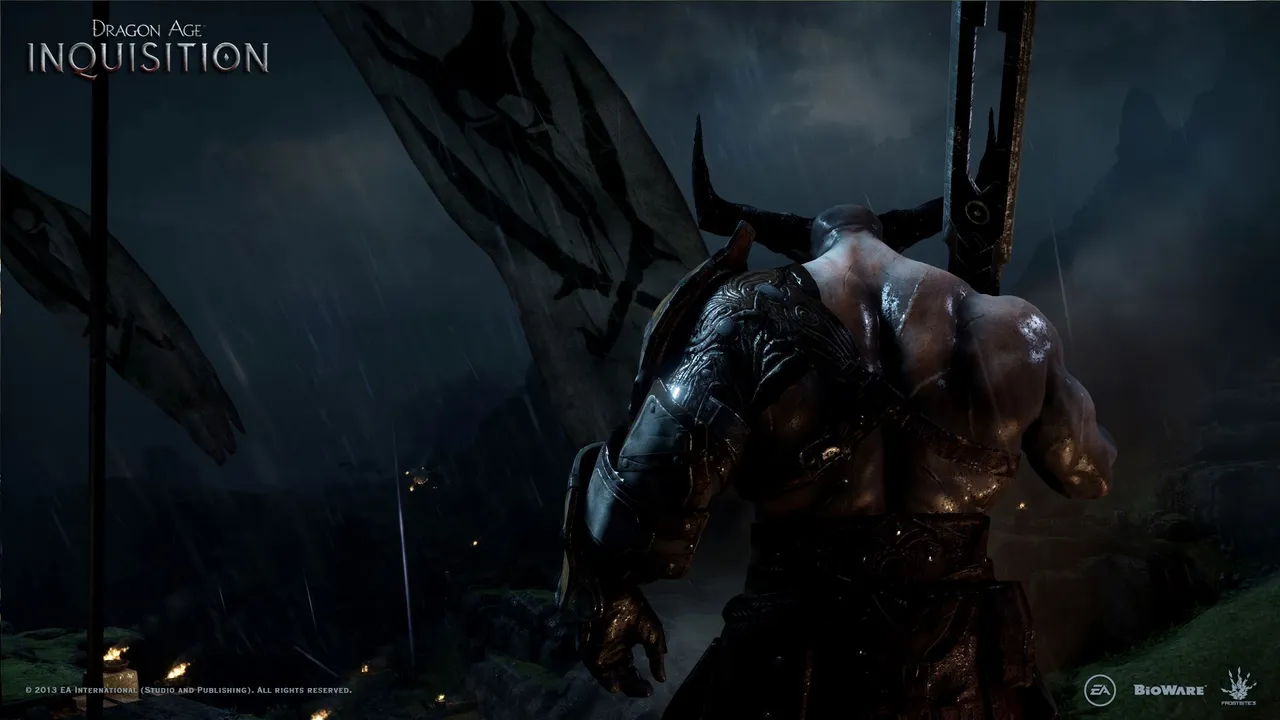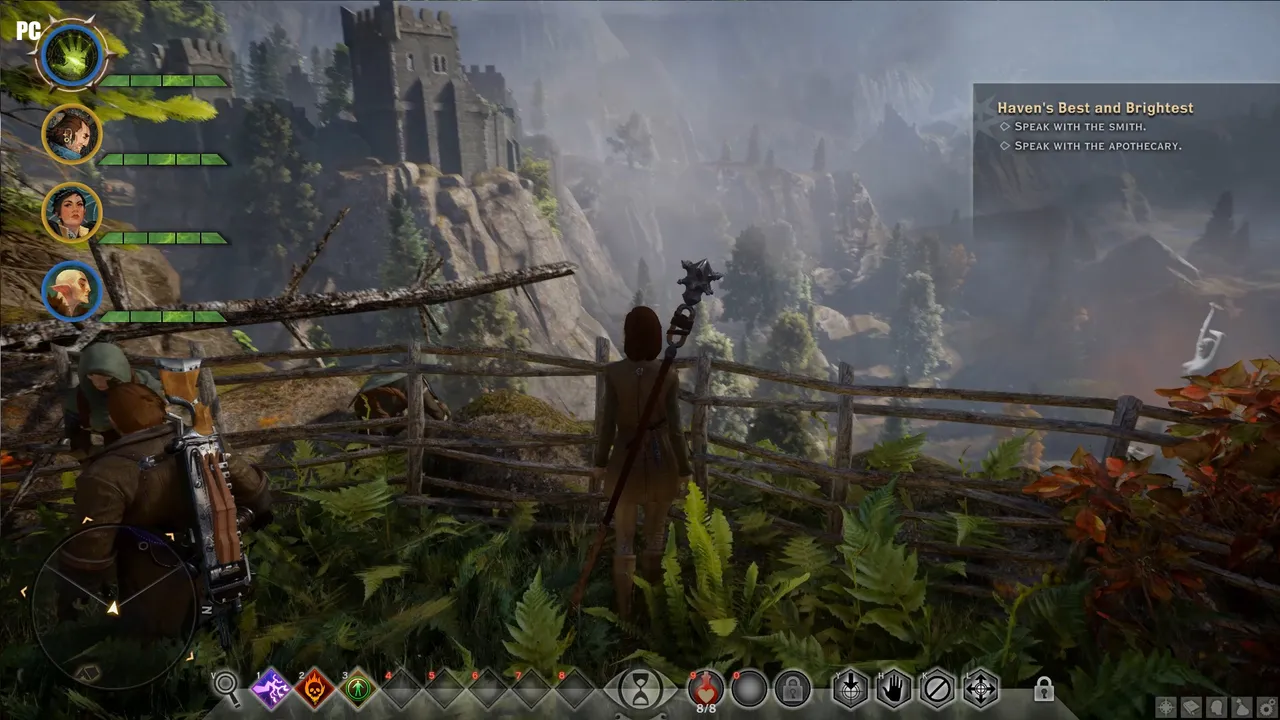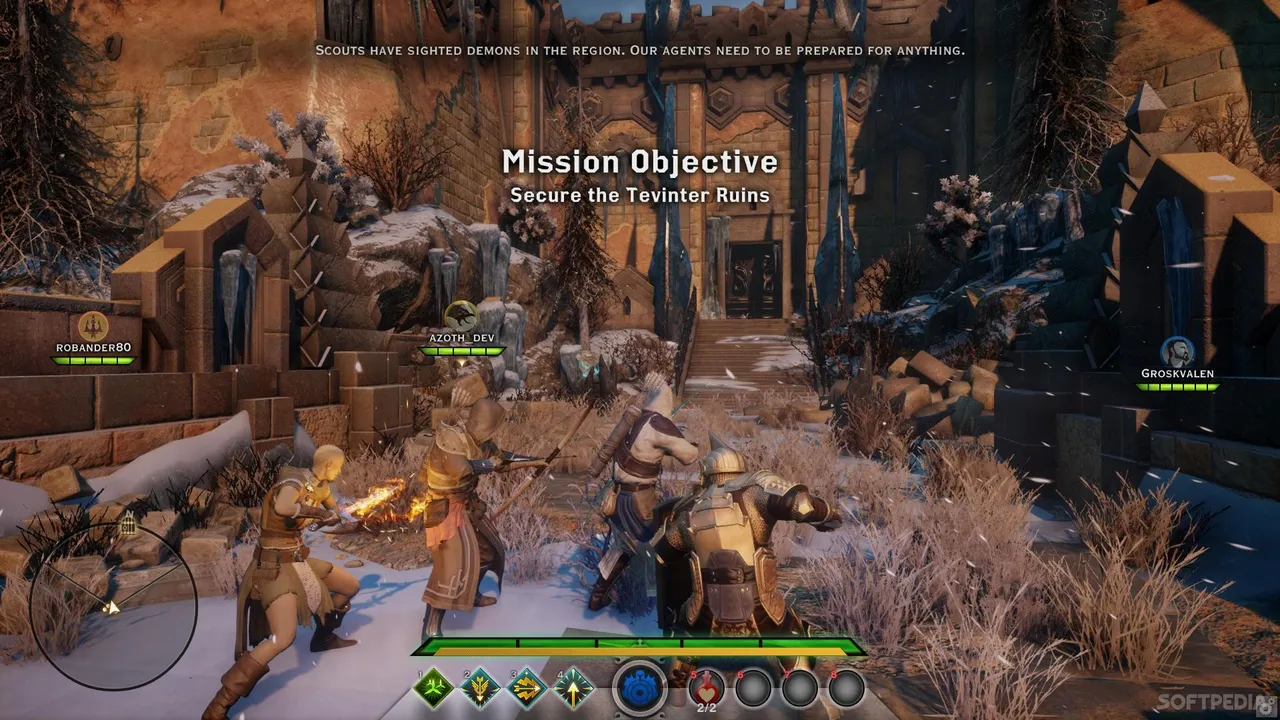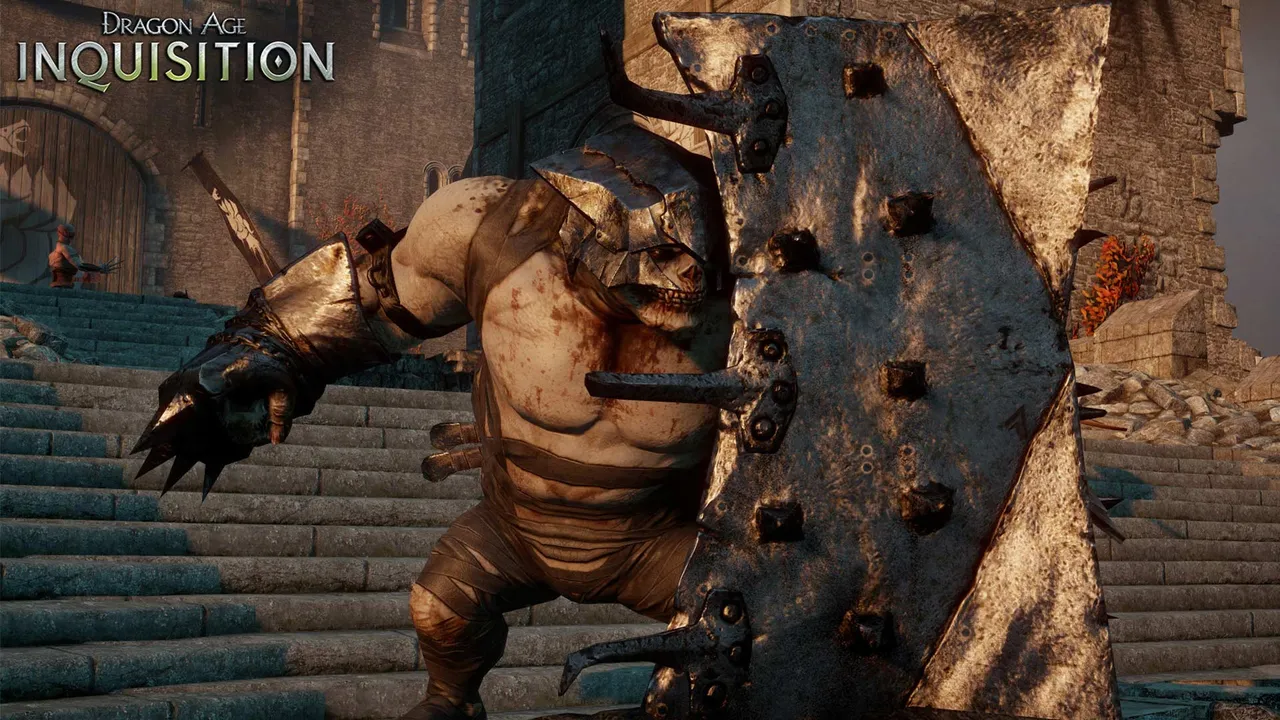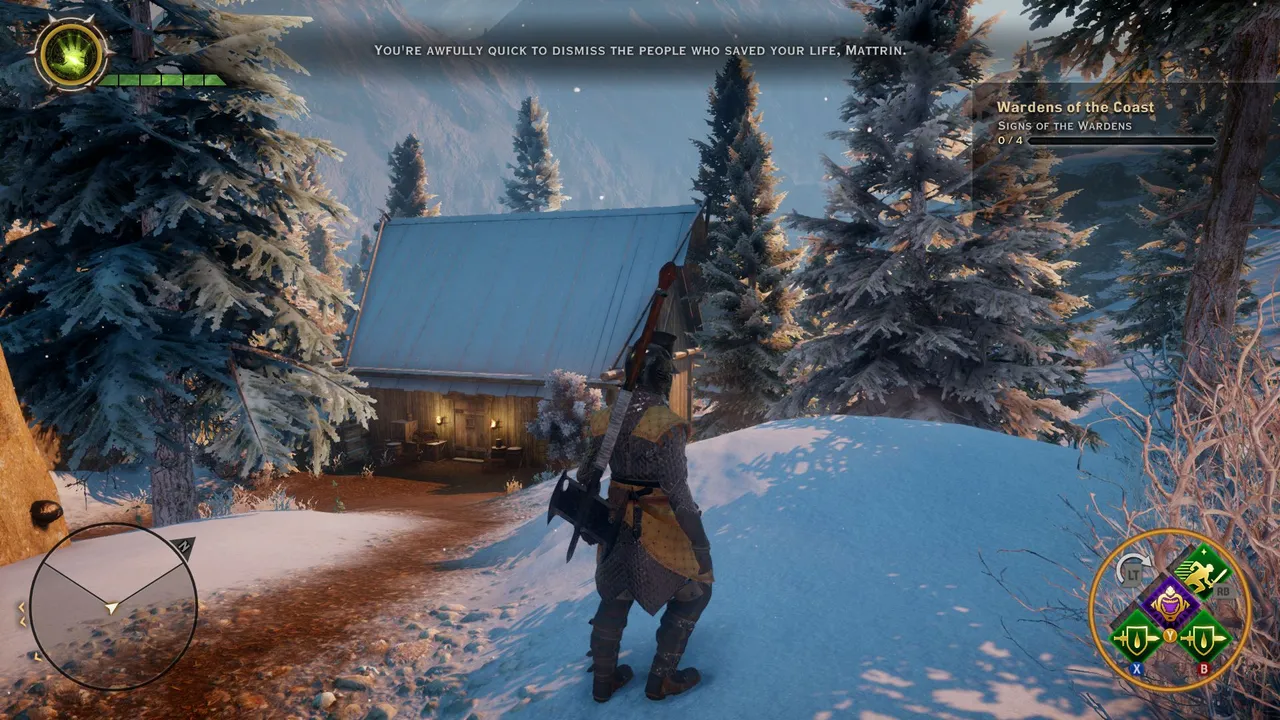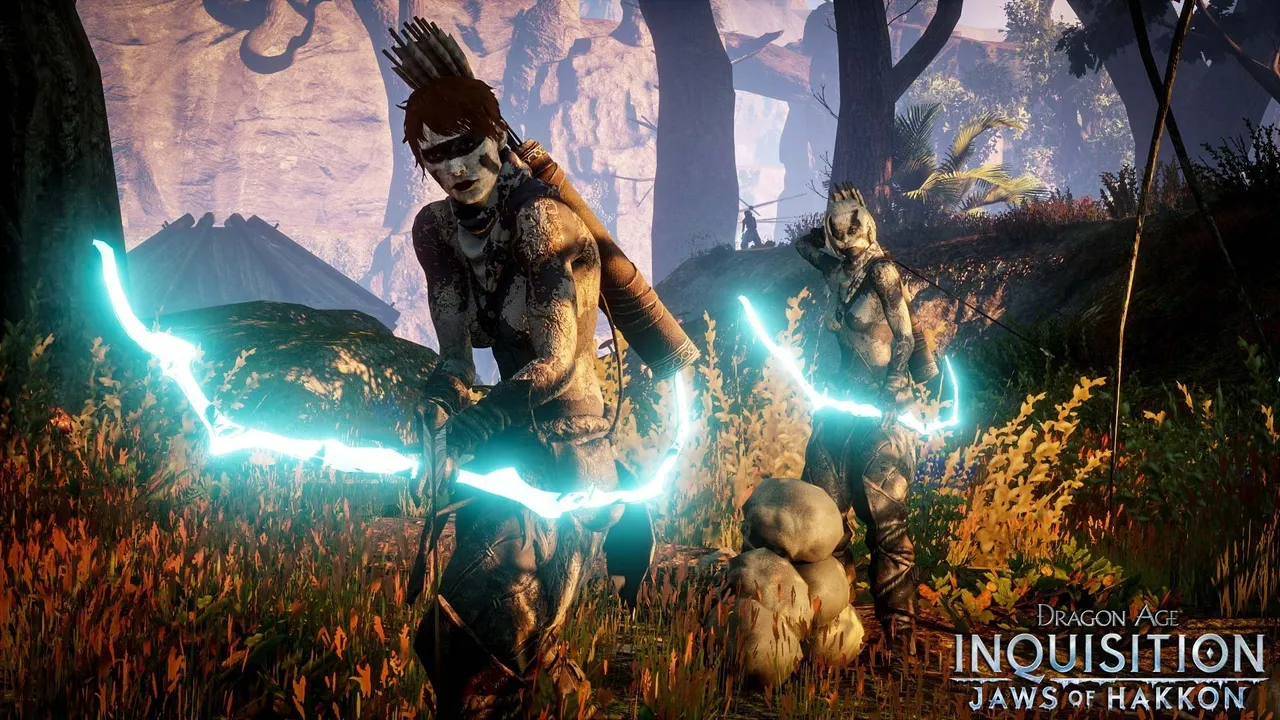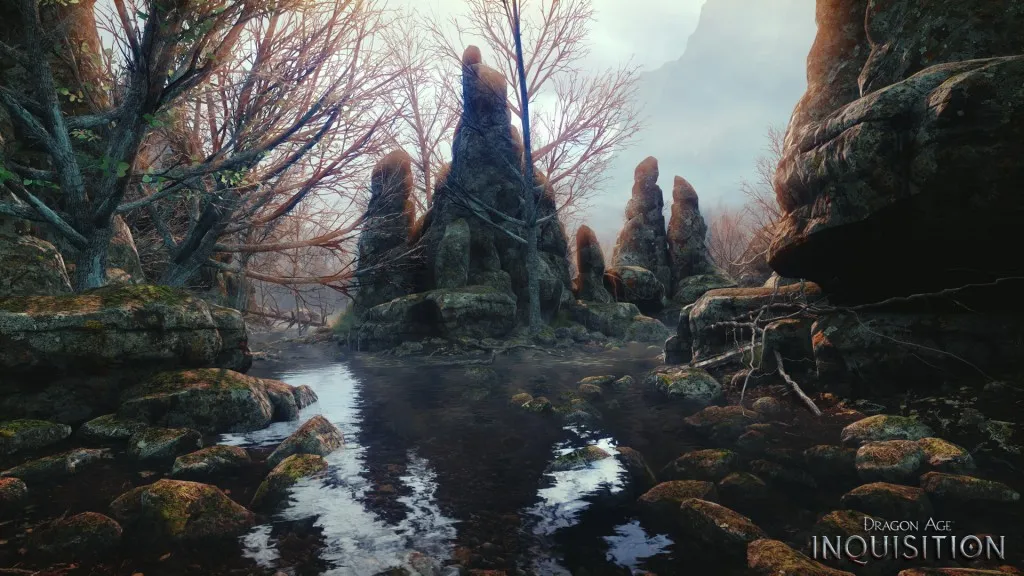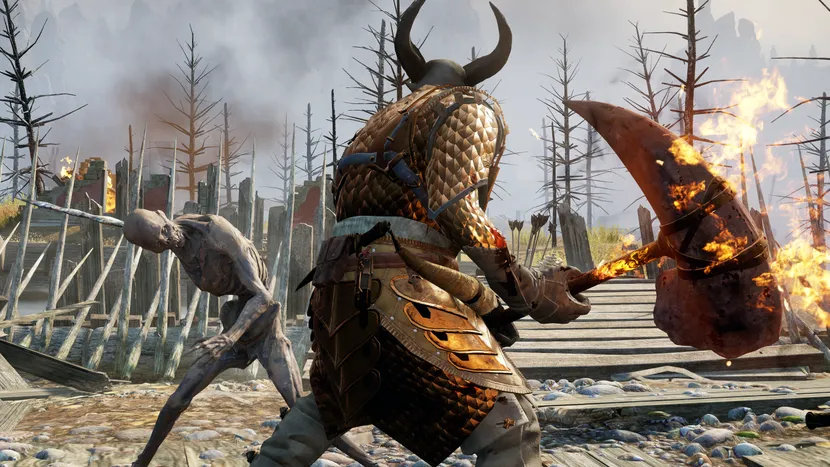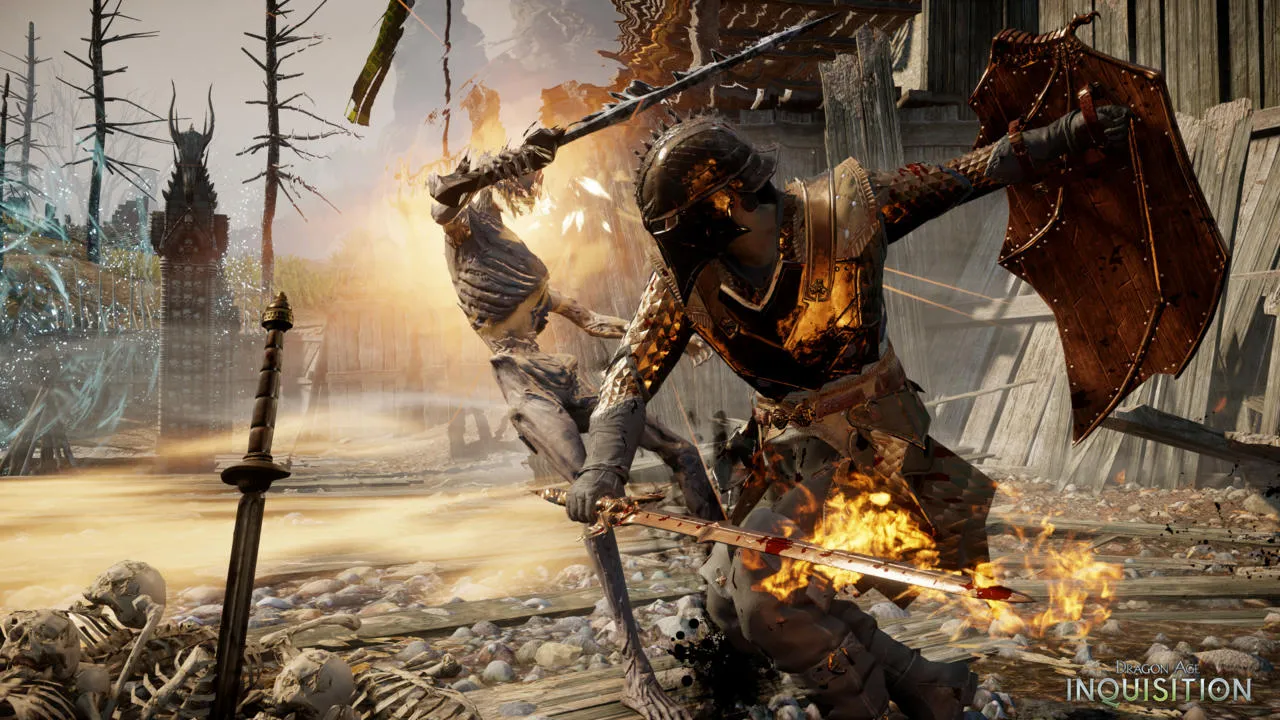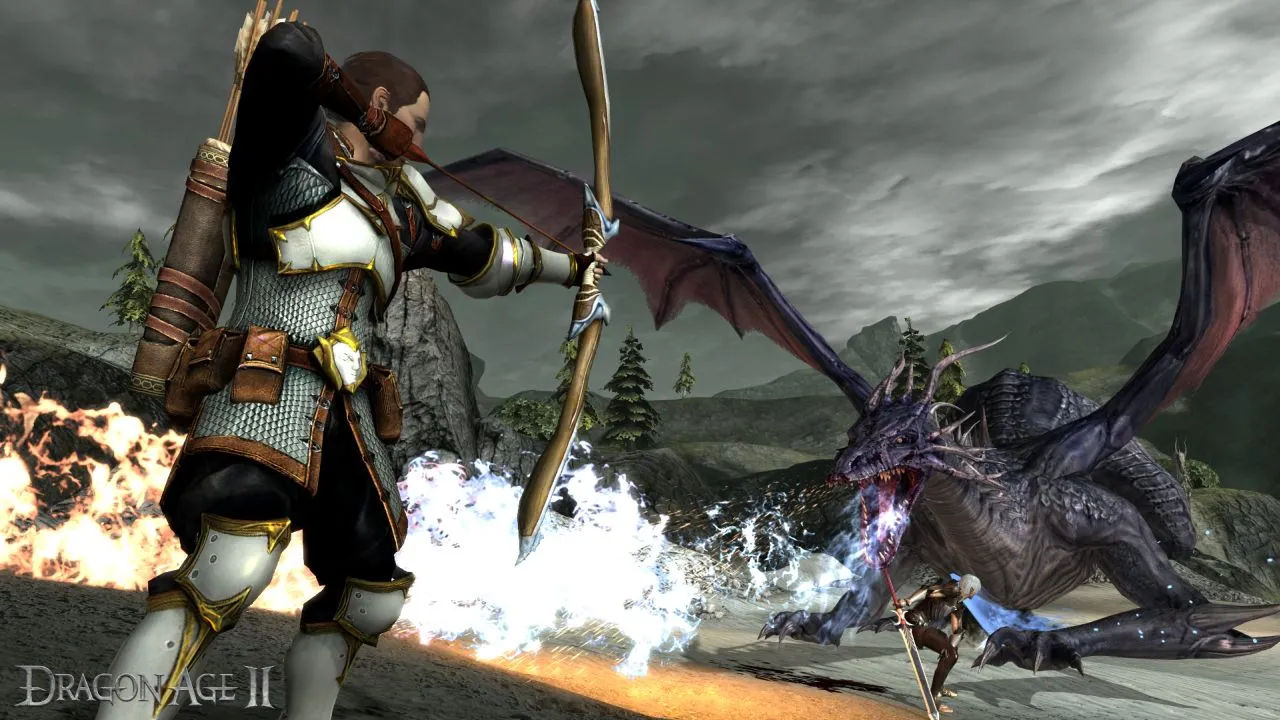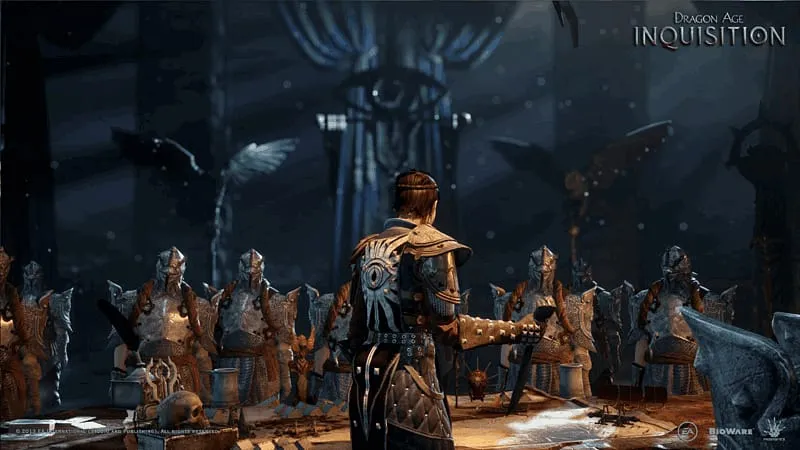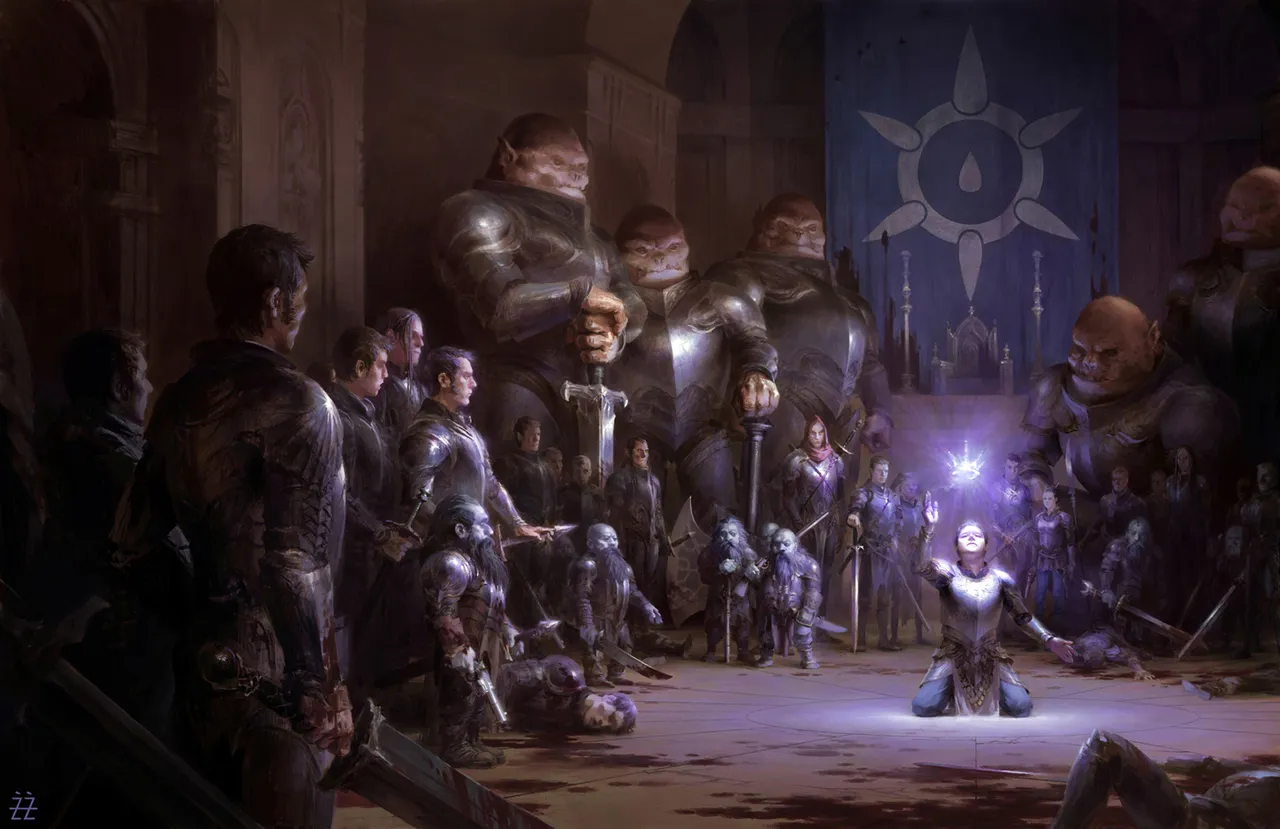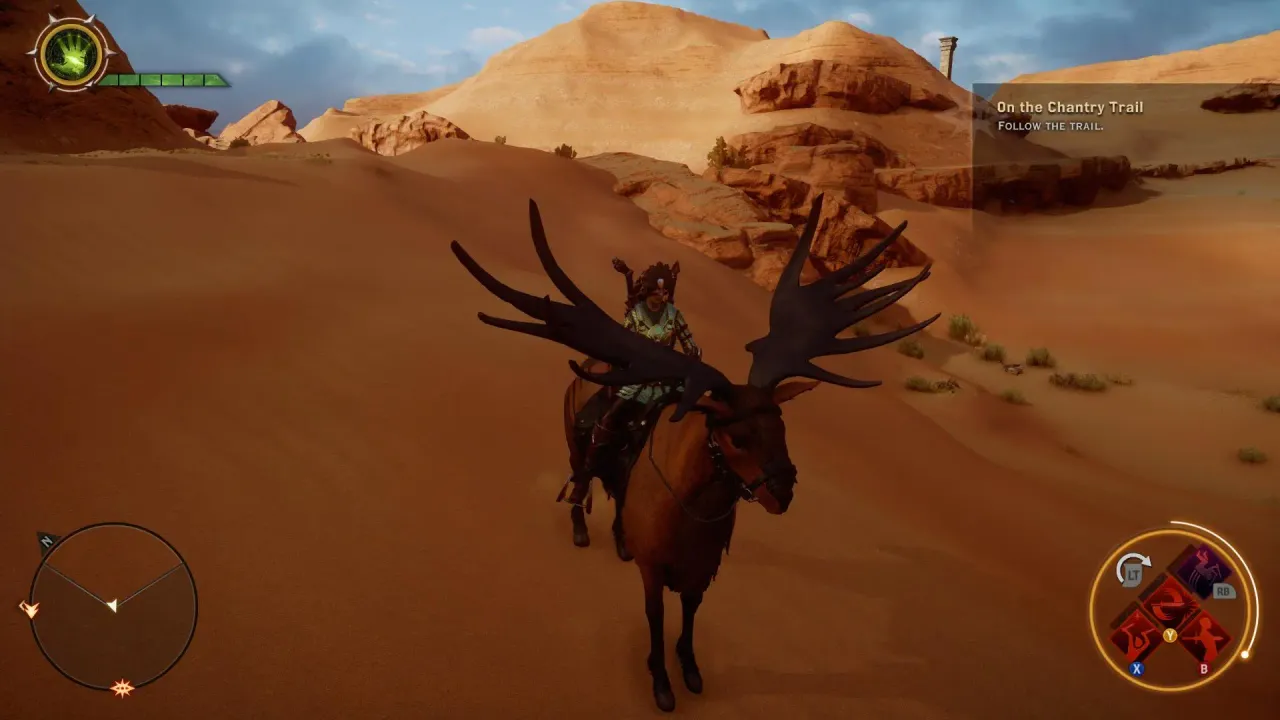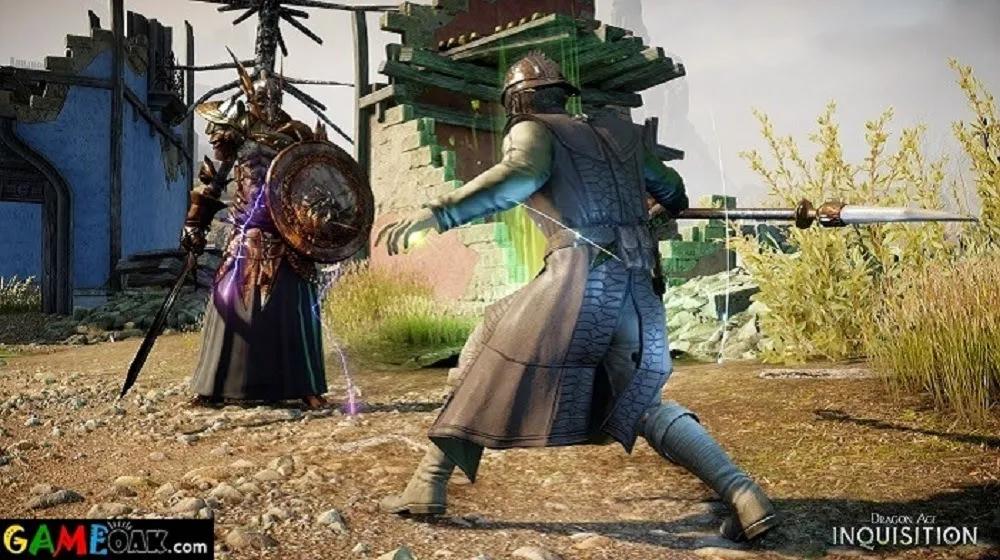Immense, varied and at the highest level. Bioware begins a new stage in the most spectacular way possible to demonstrate that it remains that indispensable study for anyone minimally interested in the role.
When Dragon Age: OriginsHe appeared as the savior of a type of RPG that was no longer done, let alone on that scale. The genre had been turning in the direction of the individual game in first or third person, with a more or less marked component of direct action. Group management and tactical combat were rare within the limited range of Western role-playing games of the time. The Bioware project had been presented and sold as a return to the essence of Baldur's Gate, an ambitious project in which many years had been invested only in the construction of a world of its own and its history. The result was a great triumph, an epic and huge game with an epic story and characters at the level of what is expected of the Canadian studio, all seasoned by a combat endowed with that touch of tactics and planning that were missing in another class of bets of the genre. Excellent reviews, good sales and the fervor of a large community were his reward for a job well done.
In the midst of much expectation, the second part would arrive, although much earlier than expected given the time of development of the first. It was a completely different story, set in a different part of the world: The Free Marches, and specifically Kirkwall, the infamous "City of the Chains", one of the great known ports of Thedas. Their objectives were very different as a project in line with an unavoidable circumstance: a very demanding period of development -it has been unofficially aimed at a year of production-. The first Dragon Age had been seven years in the kitchen between its different phases, and apparently it was demanded that the sequel came out fast to get more performance to the newly created series. It opted for a more concentrated and local story, centered on the city and with few excursions abroad, in addition to changing the combat system of Origins to something more direct that homogenized the versions of PC and consoles, something that the first game had not accomplished. The result was a game that, in spite of its triumphs - that has them, particularly in narrative and especially in characters - was the shadow of its predecessor.
With the name of the damaged series, BiowareI needed a bang on the table if I did not want to see the universe that I had worked so hard to die in. I needed something spectacular that would serve to apologize and a new opportunity, also to demonstrate that they were still that studio capable of launching the most impressive RPGs within the commercial sector. This time there have been no compromises: the game has had a long development cycle of more than four years, a change of engine to embrace Frostbite in line with most of the studies within EA and a vibrant promotion process in which he has taught the game as active and passive - some have had to stop seeing promotional material because it seemed that they were going to see all the scenarios of the games before they could touch it. The result is a really spectacular, dedicated and generous work,
Narrative and characters
The plot begins somewhat hastily, which contrasts with a very long game. It all begins with a conclave in which the Divine of the Song of Lightgathers all the main members of the order and the main leaders of the rebel magicians and the Templars. The events in Kirkwall were a trigger for the civil war to break out in various regions of Thedas, with the magicians renouncing the circles and the Templars seeking to re-establish them by force. For the less initiated in the universe of Dragon Age, it is necessary to remember that the magicians in certain regions like Orlais or Ferelden lived forcibly in towers guarded by the Templars, a measure forced by the real possibility that those with magical talent are possessed by demons of the Veil, the realm of spirits. Those who do not comply with this regulation are considered apostate and are persecuted, captured and eliminated.
The conclave arrives at an abrupt end when the meeting place explodes, taking ahead the Divine Justinian V and all those gathered. Not only that, the explosion creates a breach in the sky through which the demons of the veil freely pass into the mortal world, something never seen before and which awakens the logical fear that it is the end of the world. The representative of Andrasteon earth it has disappeared, the Song is decapitated and the chances of achieving peace in the civil war have jumped to pieces. The only thing left of the explosion is a person lying on the ground: our protagonist. We remember nothing of what happened except an image of a woman helping us to escape a horde of creatures, and we also wake up with a mysterious and painful green mark on the hand that seems linked to the gap in the sky. As expected, we are the main suspect and the only thing that saves us from being executed in the act is the possibility that the brand in our hand may have some kind of effect on a gap that never ceases to grow. The maximum culprit becomes, however, a savior when he manages to stop the growth of the arrow with the mark of his hands, preventing more demons from appearing in the area. From here, the events are precipitated and we have just become the "Herald of Andraste", located in the center of a new Inquisition ready to restore order to the world.
At the time of creating our character we are well equipped with options, we can choose the four races that we have already seen in Dragon Age, including the Qunarithat for the first time are playable. Depending on the race and the specialty -Warrior, Rogue or Wizard- we will have different contexts that will fit into the plot. Bioware, always retailer, has ensured that there are credible ramifications of the story according to this circumstance. For example, if we are elf, dwarf or qunari, what remains of the Cantar will automatically denounce the inquisition and declare it a heresy, understanding that Andraste would never send someone who was not human to save them. Being of another race also opens up special conversational possibilities and new forms of interaction with similar people, allowing us to define our role quite freely - for example, being an elf dalishan, we have some margin to choose to adopt more radical positions of race and of denunciation before the humans or to be more open or even open to the religion of the Cantar. It does not become what was done in Origins or by a long way, with the great variety of possible contexts, its different beginnings and its ramifications, but this recognition of the race and the context of the protagonist is something that is patent and that is appreciated in good measure during the game. For the rest, we have many options to customize the face of our character to choice, from usual options such as hairstyles to such trivial things as choosing exactly the position of a scar. its different beginnings and its ramifications, but this recognition of the race and the context of the protagonist is something that is patent and that is appreciated in good measure during the game. For the rest, we have many options to customize the face of our character to choice, from usual options such as hairstyles to such trivial things as choosing exactly the position of a scar. its different beginnings and its ramifications, but this recognition of the race and the context of the protagonist is something that is patent and that is appreciated in good measure during the game. For the rest, we have many options to customize the face of our character to choice, from usual options such as hairstyles to such trivial things as choosing exactly the position of a scar.
But this aspect is only a small detail of the huge narrative cake that has been raised by the Canadian company. We can safely say that Dragon Age: Inquisitionis the second game with the most content that the studio has created, only behind Baldur's Gate II in its stage under the label Black Isle-. This is something that manifests itself in different points of the game and that we will comment on throughout this text, but one of them is that of history, characters and context. On the one hand we have the development of the main plot, which as you would expect is exciting, varied and is endowed with the usual talent of Bioware at the time of creating memorable characters with interesting relationships between them and with the protagonist. We return to a more epic tone with a "chosen" character becoming the central force on which the hopes of ending a threat willing to end the world are deposited. But we do it in a different way, with a broader perspective of our growing powers and command capacity. At the same time, we have secondary missions of great weight, dozens of characters with large, small and medium roles, as well as a multitude of books and documents that tell us about the history of Ferelden and Orlais in a credible way, with texts by academics who They tell the story not as something they know irrefutably but using what they have to formulate hypotheses, sometimes contradictory and sometimes with an air of denunciation about the "official version".
As always in Dragon Age, and more in the case of Inquisition, politics plays a key role in the story and in the characters. National, religious and interracial tensions are common and are seen both at a general level and concentrated in simple conversations with characters. In addition, Bioware has done a great job in providing them with complexity and nuances. For example, the rebellion of wizards from the outside can be seen as a homogenous thing with a fat line of wizards who want freedom after years imprisoned in circles under the constant supervision of their "jailers" the Templars. But when you get down to the level of people you can see that there are many types of points of view: there are people who were comfortable with that life in seclusion and study, without worrying about anything other than the practice of magic but they were forced to follow the group so as not to be left alone, or worse, confronted; others postulate that the moment and the form chosen to rise up in rebellion is the worst possible, since with it they seem to validate the terrorist act that was seen in Kirkwall. In Inquisition, having to deal with nobles and governments ofFerelden and Orlais , we will have a lot of time if we want to imbue ourselves in the large amount of content that has been incorporated. The Codex is a tremendously useful and very interesting tool with which to expand our knowledge of the details that we are getting to know, in addition we must celebrate the beautiful illustrations in the form of a letter with which it is accompanied, another great detail.
There is a detail that is worth mentioning and that is a good example of how you can build something big using just a bit of text. A much-touted part of the Inquisition is the Battle Table, which is a kind of meta-map that serves both to unlock new areas and missions within the plot, and to order our agents to perform missions in the two regions of the game: Ferelden and Orlais. These missions are not great from the point of view of the game, we simply order one of our three agents to attend it and in a variable period of time the mission ends with a modest reward. The important thing, however, is the illusion that we are really controlling an organization of increasing scale and with more and more influences. Some missions serve to seat someone in an important noble house, others allow us to forge commercial agreements with forces such as Antiva or Orzammar, there are requests for help from different forces and in all we can solve it through diplomacy, espionage or force. In general it does not seem that there are big differences if we do it with one or another and it does not become a meta-game in itself since there are hardly any strategic decisions to make. But the illusion that creates is powerful thanks to the texts of the mission and the reports of each one when they are completed.
About our group, it is one of the great engines and source of entertainment of history. Very diverse characters with completely different backgrounds and motivations, sometimes extreme, that are only together because they are exceptional circumstances. Our relationship with them will be complex and our decisions will mark how they see us. They can also ask us for favors in the form of missions, both playable and wartime and of course they will delight us with the conversations between them when we are playing a mission or exploring a specific location. There is everything, inconsequential chatter, very poorly concealed pujas that fit with more or less grace according to the personality of each one, gestures of camadería, Curious questions about cultural aspects of someone of another race and even heated discussions about religion and philosophy of life, are short but add a new layer of interest to our partners of fatigue. Our relationships are also not limited to the group of playable characters, being equally intense with figures such as our inner circle formed by two familiar faces:Leliana - master spy - and Cullen - in charge of the troops -, to which Josephine is added - ambassador and diplomat.
And of course, being a game of Bioware there are romances and sexual relations, more than ever in fact: with the members of the group, with those of the inner circle and even with secondary characters. For this occasion we have also chosen to create characters of different orientation: there are heterosexuals, gays and bisexuals. By power we can throw the yews to whoever we want, but our charms will only come if there is a certain predisposition on the part of our interlocutor. Beyond the games of seduction, the general conversation method is the usual one of the titles of the study. The classic circle returns with options that, again, move away from the moral path of Good Legal / Chaotic Evil to bet on a range of attitudes to situations: firmness, doubt, sentimentality, aggressiveness, sarcasm ... are the most used, although there are also responses that depend on the protagonist's race or knowledge that can accumulate during the game. For those who come from other games the company will be perfectly familiar, and those that are new, will find it easy to assimilate. A good detail is that we can eliminate the icons that indicate what kind of response we are giving, and also the indicators on whether our partners approve or not our actions, making the whole system more natural and less mechanical, if desired. , speaking for those who come new: no, you do not need to play the previous Dragon Age. There are characters that come back and winks, but this is an independent story and the bases can be perfectly known through the Codex and the events of the game. For those who come from other games the company will be perfectly familiar, and those that are new, will find it easy to assimilate. A good detail is that we can eliminate the icons that indicate what kind of response we are giving, and also the indicators on whether our partners approve or not our actions, making the whole system more natural and less mechanical, if desired. , speaking for those who come new: no, you do not need to play the previous Dragon Age. There are characters that come back and winks, but this is an independent story and the bases can be perfectly known through the Codex and the events of the game. For those who come from other games the company will be perfectly familiar, and those that are new, will find it easy to assimilate. A good detail is that we can eliminate the icons that indicate what kind of response we are giving, and also the indicators on whether our partners approve or not our actions, making the whole system more natural and less mechanical, if desired. , speaking for those who come new: no, you do not need to play the previous Dragon Age. There are characters that come back and winks, but this is an independent story and the bases can be perfectly known through the Codex and the events of the game. A good detail is that we can eliminate the icons that indicate what kind of response we are giving, and also the indicators on whether our partners approve or not our actions, making the whole system more natural and less mechanical, if desired. , speaking for those who come new: no, you do not need to play the previous Dragon Age. There are characters that come back and winks, but this is an independent story and the bases can be perfectly known through the Codex and the events of the game. A good detail is that we can eliminate the icons that indicate what kind of response we are giving, and also the indicators on whether our partners approve or not our actions, making the whole system more natural and less mechanical, if desired. , speaking for those who come new: no, you do not need to play the previous Dragon Age. There are characters that come back and winks, but this is an independent story and the bases can be perfectly known through the Codex and the events of the game. no need to play the previous Dragon Age. There are characters that come back and winks, but this is an independent story and the bases can be perfectly known through the Codex and the events of the game. no need to play the previous Dragon Age. There are characters that come back and winks, but this is an independent story and the bases can be perfectly known through the Codex and the events of the game.
Game Structure and Content
The great novelty of Dragon Age: Inquisition is undoubtedly in the structure chosen. Much has been written about the influence of Elder Scrolls and the great success of Skyrimabout the development of Inquisition. And we have also seen those great open scenarios and the promise of exploration. Has Tamriel invaded the world of Thedas? No, not exactly. Bioware has certainly paid attention to modern trends, both to the Bethesda game and to certain techniques in modern sandboxes such as Assassin's Creed, in the way they present maps loaded with large and small activities. But we must make clear that Dragon Age is not a sandbox to use, rather wearing a sandbox costume and acquires some of its features in order to feed the main column of the game, which remains its main plot and the bifurcations to secondary missions of draft
To be clearer, it's not that you can not say that Dragon Age is not a " sandbox "", Offers considerable freedom and numerous activities and objectives to pursue, imposing only a very thin limit that gives meaning to the progression of the adventure and the plot. But at the same time it is not a game that invites you to "do whatever you want and find your own fun", this is not exactly the goal. What has been achieved, and achieved, is to balance between more linear parts that advance the story, along with other more open parts in which to develop secondary missions, fight against hidden creatures much more powerful than normal, or simply collect some of the many resources that are available. The world of Inquisition in the game is not a unified mass of land, but is divided into several large portions of land in different points of Ferelden and Orlais.
The first hours of play, without falling into destry, are a good example of this duality that enriches the whole Inquisition. The beginning of the game is a completely linear and very narrative development that takes us to a marked conclusion, with no space to explore. Once finished, the first site we visited is " the interior lands"An open map of which we only realize how big it really is when we advance a lot and the map begins to reveal itself in our path. It is a large region with mountains, lakes, diverse fortresses and ruins, as well as an impressive dwarf location and diverse areas full of missions. It is difficult to see everything in one sitting and even some areas will be inaccessible to the level of the enemies in them, so it is perfectly feasible to go far enough, change zone and then later return. But the impressive thing is when we realize that this first location is only a small part of the game, with more completely different areas and also of great extension. Some are not even "mandatory" and are part of secondary level missions for which custom locations have been built.
Every time we arrive in an area we have a lot of objectives before us. Some are active and classic, like the villager who asks us to locate his son, or the hunter who asks if we can hunt for him because he is too scared to do it himself. These missions alternate with passive objectives that are on the map and also contribute to our influence and power, values that determine our progression in the game and the new territories / missions that we can unlock. For example, one of the usual ones is the open gaps in each map, places where demons are cast and that you have to "clean up" before you can close the portal with our powers. Some missions we will find them in abandoned documents, that can indicate us the way to locations of interest,get everything . " And the thing "gets worse" at a point in the game where we can start investing resources to improve our facilities or the equipment of the troops of the Inquisition, which depend on finding considerable amounts of certain resources, so it can take a while if we put ourselves to it. In addition we must add curious things like the observatories that are in each area, which offer us funny puzzles to form constellations. Once deciphered all in a specific area, we will open access to a hidden and inaccessible previously, with some succulent reward.
An important detail of the scenarios is that Bioware has taken care very well and very intelligently in how it proposes encounterswith the enemies, adding contextual elements, interactivity for the actions of the player and creating their own "scale of power" system. We return to the first open region we visited, the interior lands. When we arrive we do it at the request of a member of the Canticle, who asks us for help to save the population from the crossfire between templars and rebellious magicians. As we go deeper into the stage we find a clamor for war and numerous groups of enemies fighting among themselves, who will also attack us if we cross their path. Our main objective is to locate the base of wizards and templars in the area to destroy them, at which time the clamor and that kind of enemies will disappear. Thanks to our actions, the scenario has changed, but that does not mean there are no other dangers:
Later on we can return and we will see another class of enemies, of more level but completely different and even justified by history. In this way, we never have completely empty scenarios, although the density, variety and level of the enemies change in response to our actions. To that we must add that many large maps have areas and creatures that do not fit in any case at our level, so you have to choose to return later, when you are better prepared. It is not that Dragon Age: Inquisition has become STALKER, but these touches in the most open spaces help to create a sense of dynamism that helps us to "believe" the world. In addition, each zone is completely different and has its own fauna, including different types of predators that can put us in a hurry. Above all, it is necessary to re-emphasize the praiseworthiness that is tremendous amount of different locations that have been incorporated and the size of them. To arrive at a place that was not technically "obligatory" and to find an immense forest dotted with solemn statues and beautiful landscapes, full of objectives and possibilities, is certainly a pleasure and a testimony of the colossal work that has been done.
Combat
The first Dragon Age offered a debit combat of Baldur's Gate, with some modern concessions but clearly inspired by Infinity games. This worked very well for a computer with a keyboard and a mouse, but in console the thing was much more cumbersome and demanded an important adjustment without ever feeling at parity with its "big brother". With the second part, Bioware changed the system to a more "spectacular" one in which "something amazing happened when you press a button". Supposedly the tactical possibilities were still there, but they had been reduced, renouncing the tactical screen and betting on a more active and direct system, which had its own merits but was unquestionable for the depth of the combat - it also did not help the limited variety of enemies and those long combats fighting waves of enemies that appeared out of nowhere. But yes,
Inquisition simply proposes a compromise between both approaches. And it works, in large part. On the one hand, it raises that direct control with rear view of our group of four partners that allows us to experience the role we want while our colleagues are controlled by the AI. As a Warrior, we can use our soft skills to submerge ourselves in the warmest areas of combat, perform massive damage around us or focus enemy attacks on us to protect our comrades. As a rogue, we will have the possibility to look for the surprise and the back of our enemies, use weapons from a distance or plague the scenario of traps to defend our rear; and as a magician, we have several elementary and support disciplines that we can develop to reach the level 10 specialties. In the normal game mode and assuming that we develop at a good level to match our enemies, with weapons and equipment consistent , we can perform much of the meetings in this way, just stopping time and alternating between group members on rare occasions for specific things or the use of special skills. It is little tactically refined but fulfills the task of satisfying those who seek that more active approach to combat.
But if we want it, we can be quite above our group. This time we do have a tactical screenin which we can mark exactly the movements of each one, where to move -with trajectories included-, whom to attack and what to do in each moment. The characters continue to operate under the AI when they do not have specific orders, but we have a more panoramic view of the matter and greater control of the battlefield. It is possible to mark fixed points where the characters will not move, ask one of the members to defend another, or have a better perspective to create ice or fire barriers that are really effective in controlling the flow of the battle. The AI, both ally and enemy, has basic notions of how it should act, so that magicians and archers try to keep the distance, Rogues use their most devastating attacks in the back and warriors march in front of them using area attacks around them - making it difficult for rogues to stay in their area of influence for too long. In addition there is a variety of creatures with their own strategies -particularly odious are a type of demon that teleports, sending our careful positioning to walk-. In general, even in normal mode there are advantages in using the tactical screen from time to time, but it becomes more necessary in the two upper levels of difficulty.
There are some considerations to keep in mind, and a few complaints. One of the aspects that has caught our attention, although it was already warned, is the absence of magical healing. Magicians only have powers that dissipate damage as protective barriers, and all classes can access certain abilities designed to reduce or avoid damage. There is no healing class as such, so the main method of healing is potions. Fortunately, we do not have to buy or equip them, we have 8 potions for the whole groupthat they recharge when we can use the fast trip or arrive at a camp - they can be extended if desired by investing Inquisitor points. For normal battles there are plenty, but for longer battles and against enemies that do a lot of damage, they can be drained surprisingly fast and leave us in a compromise. For those moments is when the option of tactical combat is the best to avoid more efficiently that we receive damage, especially in situations when enemies are teleported or appear from various points that can not be easily blocked. In any case, it is good in the sense that the system forces us to be attentive and take into account tactical considerations in hard combats, even in normal mode, with a certain risk of falling easily if we neglect.
Now, put to get a little more exquisite, there are some things that could have been done better from the tactical side and that can be noticed if we raise the level of difficulty and, particularly, if we activate "friendly fire ", an option that looks good from a "purist" point of view but that could have been incorporated in a more effective way. The problems in particular are two: on the one hand, the tactical camera lacks a bit of perspective, ideally it should be more distant to have a better vision of the units and the enemies; we can move it freely in any direction and switch to the back camera in tactical mode, but it requires dealing a bit with the camera in front of what should be a much faster and more effective transition.
On the other hand, we miss many more options to protect the AI: we can control the skills using the characters, the favorites and those who can not use "without our permission", put limits on the mana / energy they can use, mark who to defend or accompany in the attack automatically and the potions that each one can consume. It would have been ideal to have more elaborate ways of drawing up previous strategies. There are very good examples like the Final Fantasy XII gambit system that gives us that flexibility to make the most of our group's resources even if we manage a single character, and that would have come really well here. To illustrate it,
Despite being able to stop the time, the effect of the attacks and spells is immediate so there is little margin to get someone out of the danger zone, and there are also no damage attenuations according to the level of difficulty as in Baldur's Gate: it is all or nothing, so activating it adds a level of demand that is too high at times, and with few tools to make it work beyond asking the AI not to use area attacks (with the loss of offensive capability that implies, especially as for magicians). The option of removing the AI to ensure that we have absolute control is tempting, but in doing so we turn them into puppets without initiative, which is not advisable when there are several fronts to attend in any fight. Basically,Dragon Age 2, making the combat more interesting - always taking into account the fact that Inquisition has a much greater variety of enemies - but does not offer everything it could to excel in this facet. It is one of the few sections in which Inquisition does not surpass Origins. However, we must make clear that the combat of the game is intense, varied and with many possibilities, with truly epic encounters, usual challenges even in normal mode and clearly designed situations so that we have a great advantage using the tactical system, which always It is satisfactory.
Character development and Equipment
Inquisition follows a similar path to Dragon Age 2 in terms of skills. There are three main archetypes: Rogue, Warrior and Wizard. Each of these has four skill branches in which they can invest points when they rise in level. We can combine several or deepen one or two to get access to all its possibilities, although some branches are not compatible with each other - it is useless to put points on the warrior's weapon and shield if you use a two-handed weapon. From a point, it is possible to access one of the three specializations of each branch, which generates a new skill tree that we can use. Our partners have fixed specialization options, while the protagonist, after passing a special mission, can access one of the three available within his class.
There are different approaches that can work within a group of four with this structure. You can choose with a typical tank approach, two DPS and a support magician to help put down barriers and resurrect fallen. But you can also bet on less conventional options, such as a group focused on damage that ends enemies before they can counterattack effectively, or a group more focused on creating traps and barriers that do the dirty work to avoid being surrounded of enemy groups. Experimenting and seeing what can be achieved to create a satisfactory group dynamic is important and recommendable. Some medallions will also allow us to reassign the points of each character, although at a high price. It is also important to keep in mind that there are certain general attributes of the Inquisition that have a direct effect on our abilities and inventory, as one that increases the defense of the whole group, or one that expands our pockets to have more space for objects or Potions Everything helps.
There are very attractive skills to use, and very useful. For example, those equipped with bows have a skill that, improved, causes an enemy to be incapacitated for a long time if nobody touches it, which is a great help to stop those units that empower their companions. Rogues can also sleep their opponents with somnolent powders - assuming they are not immune clear. Other skills such as the screams of warriors can improve the attack or defense of their companions, as well as attract the attention of enemies in the case of those who wear a shield. There are certain skills that are little less essential for any map in your group, particularly the barriers and the dissipation of magic to nullify the barriers of the rivals, which also have them - if in your usual group you operate with only one magician, It's worth investing a few points in the spirit branch to get those two skills. And we also have synergistic movements of the series from Origins, things like blunt attack as frozen enemies causes an added effect and a considerable extra damage, so it is worth coordinating. In addition, all the characters count in their specialization tree with a special and unique power that they can only use once their concentration meter is full. Some are area damages of special virulence as a so it's worth coordinating. In addition, all the characters count in their specialization tree with a special and unique power that they can only use once their concentration meter is full. Some are area damages of special virulence as a so it's worth coordinating. In addition, all the characters count in their specialization tree with a special and unique power that they can only use once their concentration meter is full. Some are area damages of special virulence as aMeteor rain , others turn the warrior into unstoppable beasts with multiplied damage, there is even one that completely restores the life of the group, even though some are fallen in combat, which is especially useful in certain circumstances.
About weapons, armor and objects, it goes without saying that in such a massive game we will find a good amount of them, some very spectacular. Of course, the foolishness of not being able to change the equipment of your Dragon Age 2 companions happens to a better life, and no matter how much the hairy torso of Varric imposes, from now on we will have a good amount of equipment that will change its appearance. There are not too many slots as armor: only suit and helmet / hat, although inside the suit you can reinforce arms and feet as if they were improvements, but we do not have dozens of individual pieces for each part of the game. In addition to that we have the possibility of equipping ourselves with a belt, an amulet and two rings. If the weapon or the armor is prepared, it can also be improved with custom handles and runes, all elements that are added to a huge number of objects and planes that we have. These plans allow us to build our own weapons and armor, using pieces of metal and cloth that according to their nature will add different attributes to the piece we are commissioning. If we want to create a sword in the forge, we may ask for a combination of three minerals, and each one adds an attribute. You can use the three holes with a material of the same type, in which case you will add in a specific attribute, or we can combine materials to create an object with more variety of effects, but less intense.
Multiplayer
Encouraged by the success of the Mass Effect 3 multiplayer, Bioware has taken the point to this facet. In fact, he chose to create a separate development group with those responsible for that multiplayer and assign them to offer similar experiences in the company's games, starting with the Inquisition itself. The multiplayer mode an experience outside the campaign, a group of loose missions in which each player controls his own character in a group of four to face challenges created to measure for this mode and in which it is mandatory that the group works well as a team, using the skills of their respective characters in tune to overcome the challenges devised by the designers. We could not test this mode during the analysis process, but it is really a complement and the company has taken good care to indicate that it has been developed in parallel and has not used resources from the campaign development group - it also did it with Mass Effect. Since we have not been able to prove it, we will not value it although we will be able to update it once the game reaches the market and there are more players online.
Graphics and Audio
We have tested the title on PC with Ultra graphic configuration and we dare to say that it is one of the most visually spectacular RPGs that have been made. Skyrim can beat him in ambience, and The Witcher 2 has a memorable graphic sumptuousness in some of the scenarios. But Dragon Age: Inquisition adds a series of elements that together raise it above any other rival in this section. To begin with, it has a spectacular diversity , with completely different and huge areas, each recreated with great attention to detail, a complex orography and without repairing efforts. The fact that impressive areas have been created to house non-mandatory missions is even poignant and an example of how well things have been done on this occasion.
We have discovered sometimes simply standing contemplating a landscape that has been captivating to us, as the remains of the Elvish splendor in the forests of The Emerald Tombs , the sea raging on the Coast of the Swordor one of the many places abandoned by the dwarves in the geography of the two continents we visited. We have also been intimidated by some of the game's encounters, especially those in which we have not faced dragons, which have been recreated in an incredible way thanks to a superb animation. Faces and facial animations of the characters are at a high level, and it is appreciated that the new engine has helped greatly to raise the project in the generous terms that have been raised. Put to put some hits, a cycle of day and night would not have been bad, since the time of day and the climatic effects are defined by the scenario and do not change, but it is a detail and in the end the game is not exactly designed to be that experience of "living in it" but that raises itself as a lavish stage in which to develop the adventure. Only some bugs typical of having three characters controlled by the AI and stuck to us at all times stand out as a defect - things like being uploaded to a table or moving in a circle, but they are not the norm. There may also be some quite long loads when we get to a new map, so if you can install it on solid disk, the better.
On the soundtrack, it is a job at a great level. Nor could it be expected otherwise from a composer of the level of Trevor Morris-The Tudors, The Borgias, Vikings-. Starting with the fantastic initial theme, the melodies of the game do not claim constant protagonism and leave room for calm and exploration of the wide maps, only claiming their place at key moments and well chosen. It is a work of very high level, at the height of what is expected of such a renowned composer. On the other hand, and as the personal lament of those who write these lines, it is a pity that Inon Zur has not repeated it - although perhaps being one of the first ones that pointed to the problems of time in Dragon Age II did not help him-. The soundtrack of Origins is still amazing and helped greatly to create the identity of the series, and even the music of Dragon Age 2 is also at a high level despite himself recognizing that it had been a "hasty work" . Said that, more for personal reasons and recognition than anything else, Morris's work is fantastic and even majestic at times, so few flaws can be put on it. We must remember that the game has texts in Spanish but dubbing in English, which will not be liked by everyone but is the usual with Bioware games. That does not mean to say that the work with the direction of the voices, again, of the highest level and a real pleasure that gives authenticity to the characters and situations.
conclusion
There is a moment in Dragon Age: Inquisition in which one is absolutely anonanado of the massive amount of content that the game has, and in which you really have to stop, look back and assimilate everything you have seen before accepting that there is Much to discover yet. Each arrival in a new area is a spectacle, especially when you look at the map and begin to see that yes, we have arrived at another place completely different from the previous ones but also huge, full of activities and things to discover. Those who have the cross cast to the series after Dragon Age 2, deserve to accept this moving letter of apology from Bioware and give themselves an experience that will make them forget forever the troubles that happened in Kirkwall,
Inquisition is one of the best and most strenuous works of the history of the Canadian study, the sequel that a game like Origins should have had and one of those games that really seem very cheap even if it is paid at launch price. Everything he does, he does it well or very well, and without paying attention to expenses, with a genuine waste of resources and efforts in which everything that was available to achieve the objectives has been used. The transition to Frostbite 3 has been impeccable and has undoubtedly helped to deploy that amount and variety of open scenarios, but we must not forget that an engine is just a set of tools, the important thing is the "workers" and the conditions in the that can work. Inquisition is what it is because EA has allowed Bioware to be so. There are no magic formulas, If you give just over a year to make a game to a talented group, one thing comes out. And if you give more than four, another one comes out - much better in principle, except disaster. It is too obvious a lesson to forget again, which we hope will not happen in the future. In the present, we can only celebrate that the great Bioware is back, with the biggest and most epic adventure of 2014
The best
- Massive and varied amount of content
- Large open spaces and many hours of adventure
Fantastic characters and relationships with them - Outstanding details such as the Codex
- Audiovisually at the highest level
- The sequel that really deserved Origins
Worst
- The camera in tactical mode should be able to move farther
- Something more AI control in combat would have been welcome
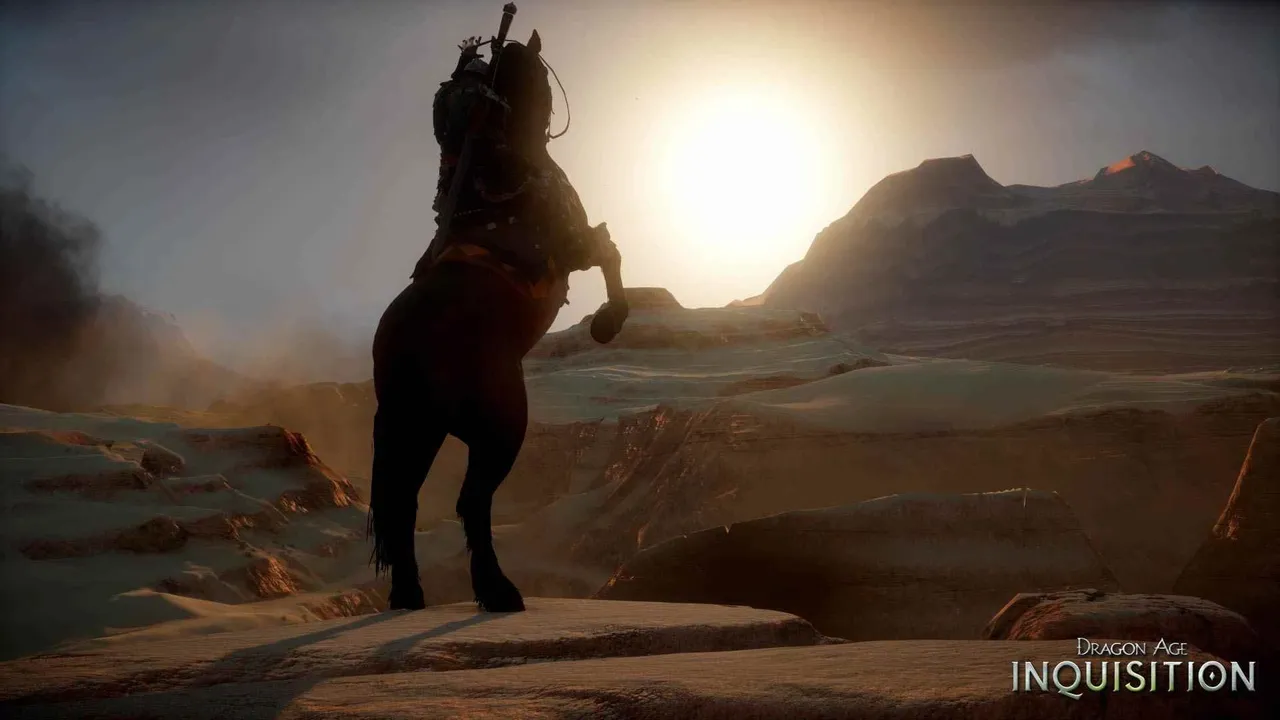
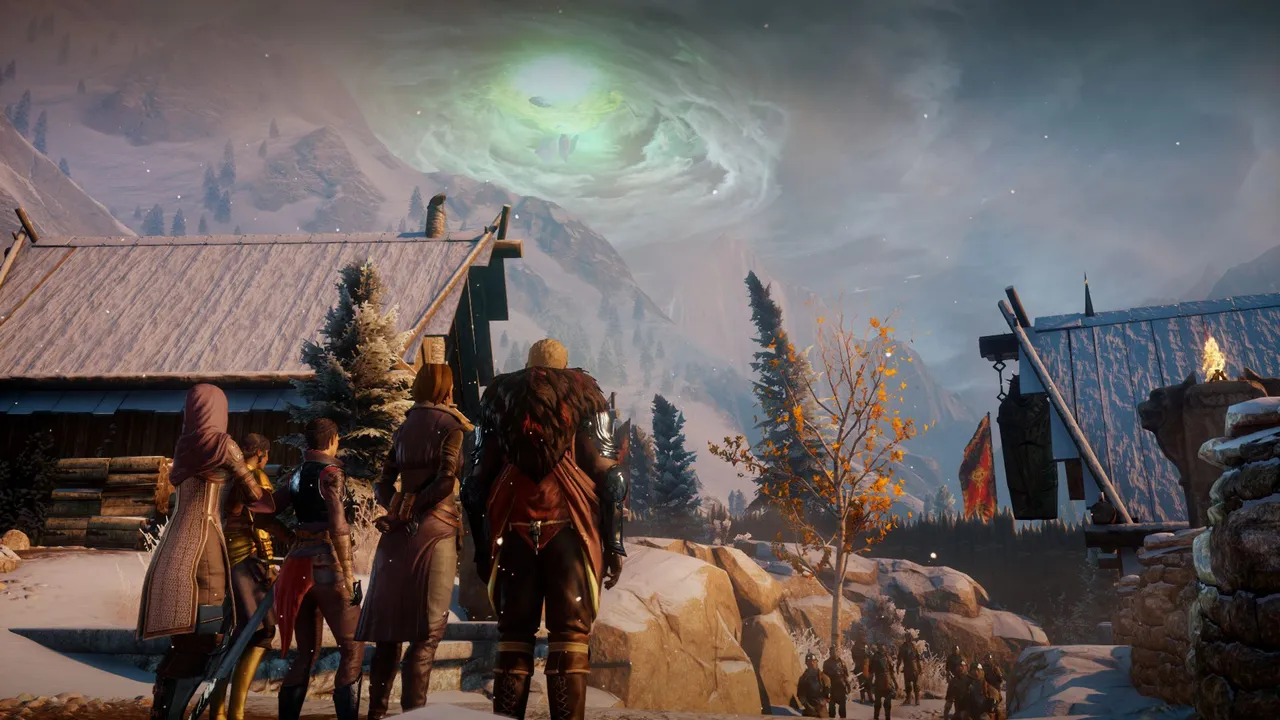
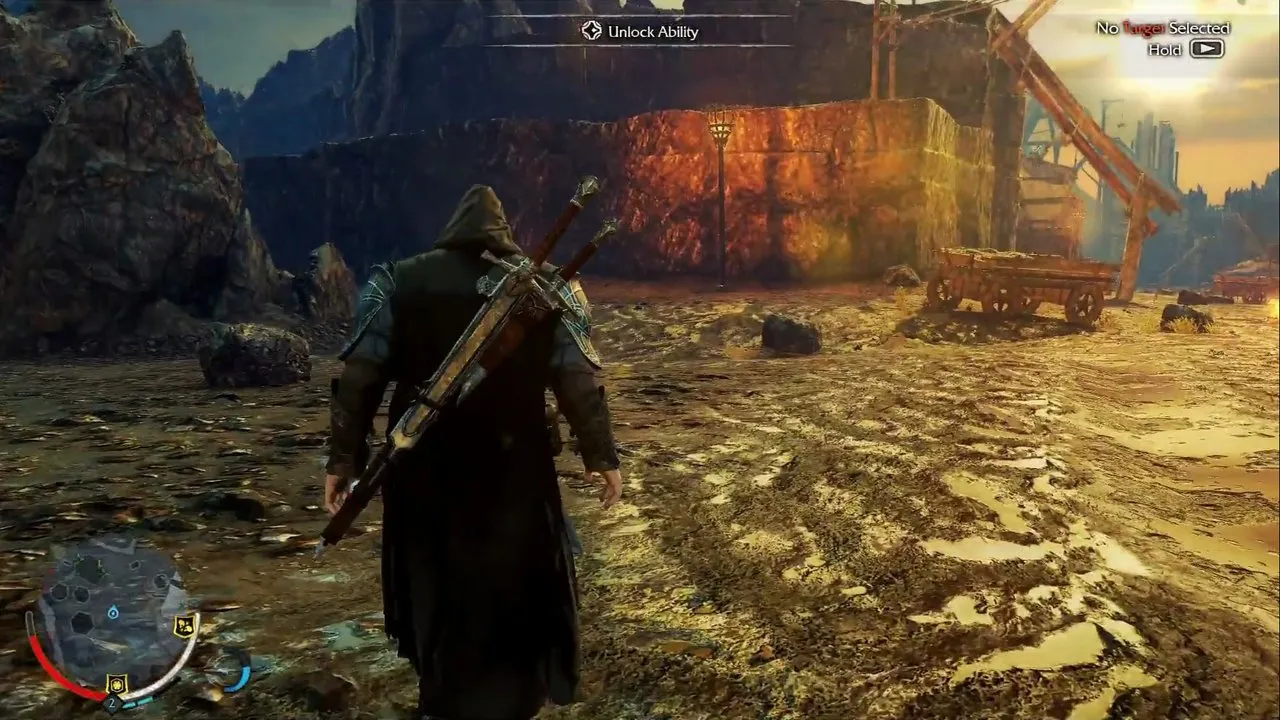
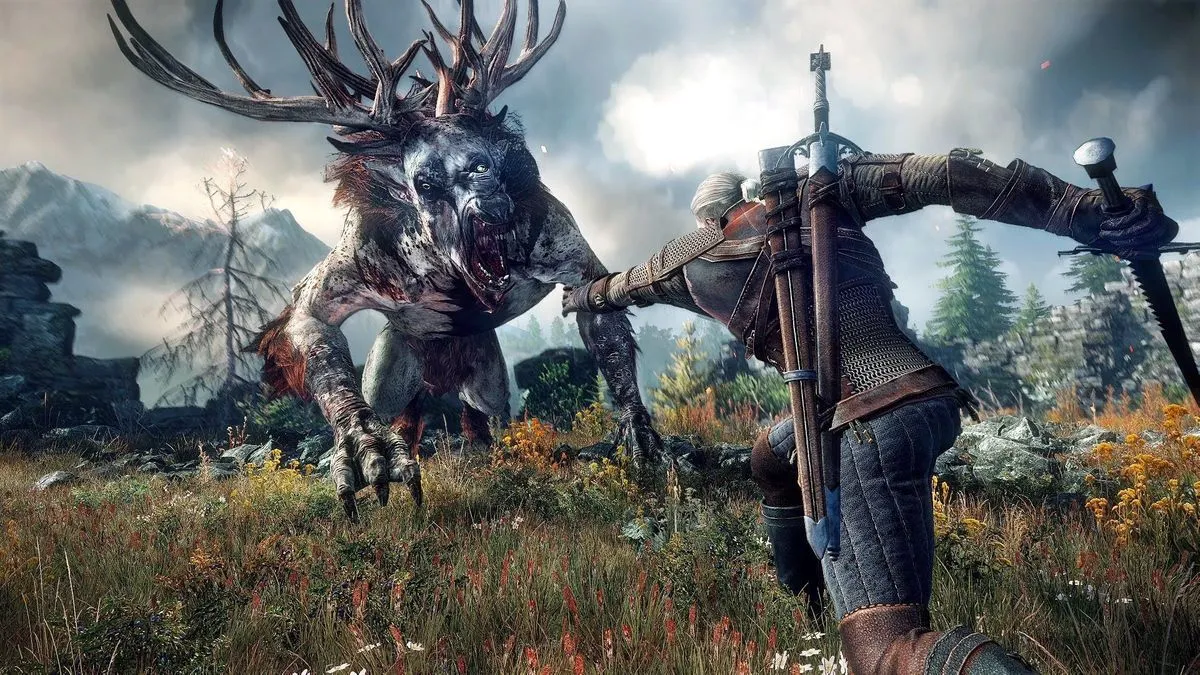
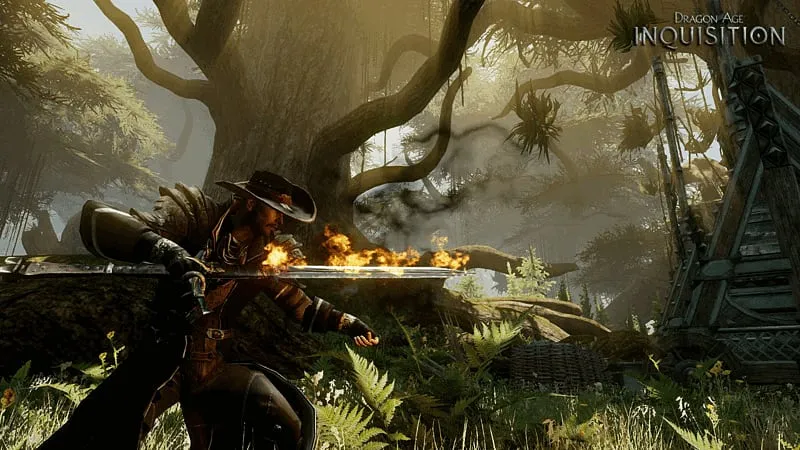
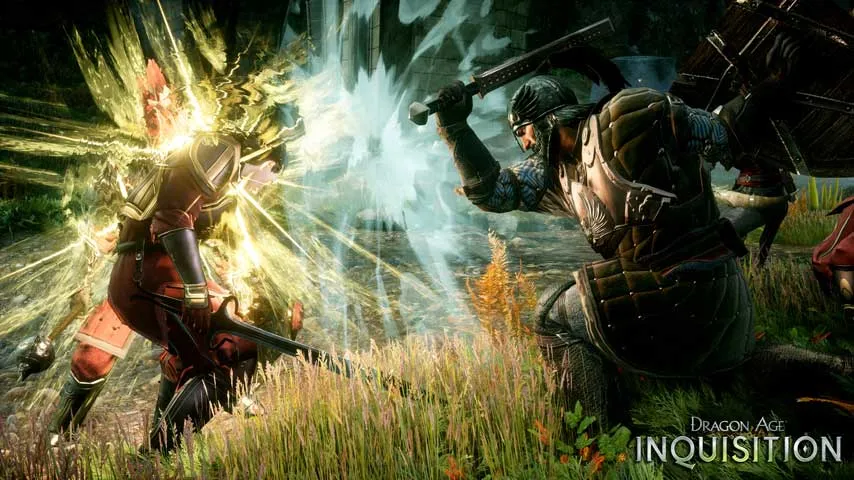
1-6 IMAGECREDIT
THANKS FOR READING, ALSO CHECK OUT MY PREVIOUS REVIEW ON Heroes of the Storm, analysis


